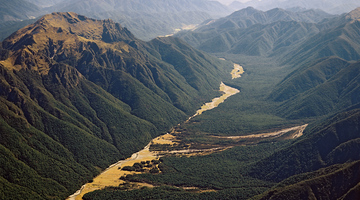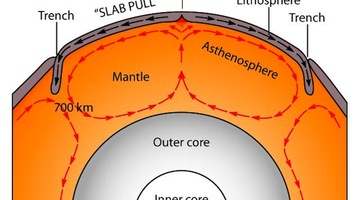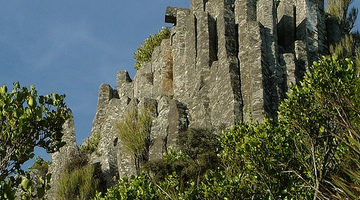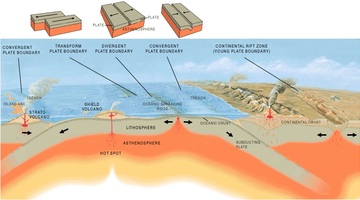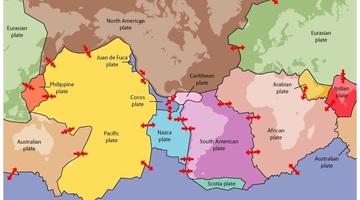Professor Richard Price describes the theory of plate tectonics. He talks about the history of the ideas that make up the theory and describes how these ideas relate to volcanology.
Transcript
PROF RICHARD PRICE
The Tonga Kermadec arc is a chain of volcanoes and volcanic islands extending from Tonga way up to the north of New Zealand, through the Kermadec Islands, extending down through the north of New Zealand and eventually arriving offshore at White Island and then on into the Taupō Volcanic Zone. It’s got literally hundreds of volcanoes. The Kermadec Islands are really just the tips, the very top of some of the seamounts that have made it to the surface. And it’s an active volcanic chain.
The theory about why it’s there goes back into the relatively new theory in geology of plate tectonics, and plate tectonics really came to the fore and started to become accepted probably in the early 1960s. The original idea of continental drift came from Wegener, and he noticed that, if you put South America and Africa together, they fit very nicely together. One looks like a reverse template of the other. And so he postulated that originally the continent was together, and they drifted apart.
It didn’t actually explain the dynamics of the world, it didn’t explain why you had big mountain ranges, it didn’t explain why you had volcanic arcs, it didn’t explain the Ring of Fire in the Pacific. Various theories were popular for a little while, for example, people argued that the Earth was expanding, that it was originally a globe covered in continental crust, and then if you blew it up like a balloon, then the continental crust broke up and bits of it were distributed around the outside.
In about the mid-60s, people began to connect up some ideas. People started to map the oceans, and what they recognised was that there was this massive mountain chain that extended all around the world. Then people became aware that, as you went away from that mountain range, the crust got older. Then they started to map the magnetics of the ocean and they found that that there was a magnetic variability that amounted to magnetic stripes that were parallel to these ridges. And then they were able to link in the fact that there was a Ring of Fire around the Pacific, and then more particularly all the earthquakes were concentrated around the rim of the Pacific.
So eventually somebody had the right idea, well, if you draw a line through all the earthquake activity, you get regions where there is no seismic activity and a lot of volcanic activity. And so the theory started to come together. And really when it came together, that theory was the most influential thing that had happened in geology since Darwin’s theory of evolution in terms of changing the paradigm, changing the way people thought about the world.
Acknowledgements:
Google Earth
NOAA


